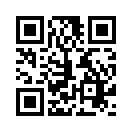[001] Heartbeat pumping (GB#103A01) | 基礎医学教育研究会(KIKKEN)Lab

TOYOSEI-SHUSHUKU?
The point of working as a pump of the heart is the pressure of the atrium, the ventricle and the artery and the valve movement. Blood can not leave the ventricle until the ventricular blood pressure is higher than the exit arterial blood pressure.
—
Contents
●cardiac cycle
In physiology textbooks (of Japan), they teach the following flow.
Filling phase ⇒ isovolumetric contraction phase ⇒ Ejection phase ⇒ isovolumetric relaxation phase ⇒ Filling phase.
The period from the filling period to before the next filling period is defined as a cardiac cycle.
(When divided finely, “atrial systole” enters between filling phase and isovolumetric contraction phase.In filling phase and subsequent atrial systole phase, valve opening and closing and blood movement remain the same and it is a series of flows, so here It does not distinguish.)
In terms that can not be heard like “isovolumetric contraction” or “isovolumetric relaxation”, the phenomenon is too instantaneous, so it seems to be hard for students to pick up.
●When all four valves are closed, it is in the isovolumetric phase
At the beginning of the cardiac cycle, the atrio ventricular valve opens and blood flows from the atrium into the ventricle.
This time is filling period (of the ventricle).
When the blood is sufficiently collected in the ventricle, the ventricular muscle begins to contract.
The sudden increase in the pressure which has been loose so far, it is likely that blood will flow back into the atrium
The atrioventricular valve is pushed back at once and closed. At this time, a sound is heard.
It is I heart sound. It seems to be the vibration that occurs when the leaflets collide when closing.
It corresponds to “dok” of Dokkun, Dokkun.
As both the atrioventricular valve and the arterial valve are closed, there is no blood flow in and out of the ventricle.
Although there is no change in the blood volume, the pressure in the ventricle rises sharply due to muscle contraction.
This short time zone is “isovolumic systole.”



At the moment the pressure in the ventricle exceeds the arterial pressure, blood is expelled to the artery,
“Ejection period” will be.
At the moment when the ventricular pressure loses arterial pressure, the arterial valve closes and the stroke ends.
And, at this time, there is a sound. It is “the second heart sound”.
It corresponds to “Kun” of Dokkin, Dokkun.
When I heard the second heart sound, the ventricle has just squeezed out the blood
Because there is pressure in the ventricle, atrioventricular valve which is a passage from atrium to ventricle is not opened.
Since the arterial valve and the atrioventricular valve are both closed, there is no blood inlet / outlet anywhere, the amount of blood in the ventricle does not change, but the ventricular muscles become loose and the pressure becomes low
It is called isovolumic diastole.



After a momentary isovolumic diastole, the atrioventricular valve opens, entering a new filling phase, repeating the same way.
If you keep watching animation briefly, it may seem that way. . .
In the animation, the right atrium ⇒ right ventricle ⇒ pulmonary circulatory system of the pulmonary artery is omitted.
・isovolumetric contraction (phase)
・isovolumetric relaxation (phase)
While the heart is pumping blood, the blood does not turn to the heart itself. The blood vessels in the heart have collapsed. Blood circulates to the heart, while the heart muscle itself is loose, blood pressure left in the aorta sends blood to the heart.
By the way, it is said that the volume of blood delivered from one adult ‘s heart at rest is about 70 to 80 ml. Although the amount per minute is 5 liters at rest, it is said that up to about 25 liters per minute at the time of activation of anxiety.
○Referenced sites
⇒If you want to know more about “cardiac cycle”
⇒If you want to know more about “heart sound”
⇒「If you want to know more about your heart valve
⇒Anatomical physiology Episode 8 “How the heart works”(Teacher Tama’s lesson)
○Related articles
◆[008] 弁の働き valve in the thin‐walled vessel ![]()
◆[023] 赤血球とヘモグロビン erythrocyte and hemoglobin ![]()
◆[046] Digestion and metabolism ![]()
○Referenced Books
・なっとく解剖生理学〈2〉ぐるぐる回す循環器 文光堂 (2013/11)
・カラー図解 人体の正常構造と機能 全10巻縮刷版,坂井 建雄,日本医事新報社
・人体機能生理学,杉 晴夫,南江堂
・トートラ人体解剖生理学 原書8版,丸善
・イラスト解剖学,松村 讓兒,中外医学社
・柔道整復学校協会編「生理学」,南江堂
・東洋療法学校協会編「生理学」,医歯薬出版株式会社
rev.20150813,rev.20160709,rev.20160829,rev.20170205.
KISO-IGAKU-KYOIKU-KENKYUKAI(KIKKEN)








